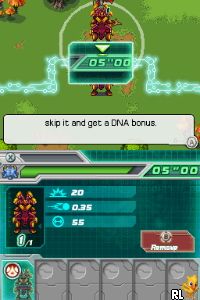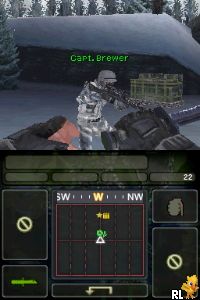Zipping files on Apple/Mac is a chore because of all the hidden files and folders added by macOS. Like .DS_Store and __MACOSX are two of the most common files and folders that are added to zip files when compressed on macOS.
Software Description: VSPlayer is a free media player designed for Mac OS. It provides an intuitive, easy to use interface to play digital media file, and supports a myriad of audio and video formats. In addition, it offers many advanced features, is extremely customizable, and is available in both Chinese and English. DS-6600 and DS-6700. Drastic DS emulator. This application allows you to Nintendo DS games with the highest speed.
The folder named __MACOSX especially is problematic because it contains duplicates of every file in the zip archive. So for example, if you use Finder to compress 20 files, the resulting zip file will contain the original 20 files, plus an additional 20 files all hidden under the /__MACOSX/ folder.

It’s a real pain and can be confusing to deal with because when you unzip the files on a Mac, the hidden files and folders are not included in the unzipped files. So you won’t be able to view them, even after you enable display of hidden files. The only way to view all the hidden files/folders is to open the zip file on a non-Mac machine, like PC/Windows or Linux.
Hidden Files
Here are some screenshots showing the hidden files and folders that are included for any folder compressed (zipped) on macOS. First screenshot shows the hidden __MACOSX directory, which is visible on PC when you open the zip file.
The next screenshot shows the set of duplicate files and folders that are included in zip files compressed on macOS. Notice the file names, each begin with a dot ., which makes the files hidden by default on most systems.
Now compare those previous screenshots (taken on PC) with the following screenshot (taken on Mac). Even with “show hidden files” enabled, the hidden __MACOSX folder and all the hidden files are not included (i.e., they do not exist hidden or otherwise) in the unzipped archive.

So again, all the hidden files/folders added by Mac are included in the unzipped files ONLY when the files are unzipped on non-Mac machines. Thus the confusion: Why on earth are the hidden files added in the first place? They are completely excluded when unzipping on Mac, and never needed for any reason on any other machine. In fact quite the opposite: the hidden files serve NO purpose other than to waste bandwidth, time, energy, resources, etc.
Why does macOS include hidden files in zip archives? It makes absolutely zero sense.
Real Problems
This is a real problem because many people use Mac to zip files to share on the Web. Problem is that not everyone uses a Mac. So anyone downloading your zip files on their Windows, Linux, or other non-Mac is going to see all those hidden files and folders. Which are utterly useless to non-Mac devices and users.
Further, by adding a duplicate set of hidden files to the zip archive, Mac essentially is doubling the size of the download zip file, which of course wastes bandwidth, disk space, and everything else. May not be a huge deal for smaller zip files, but we’re talking about potentially millions or billions of zip files downloaded every day, needlessly bloated with useless data.
__MACOSX directory and its duplicate set of files can cause problems with things like installing WordPress plugins and other applications. So if you are WordPress/Web developer, use a version-control system to manage and package/zip your files. That way you keep all the hidden junk completely out of the picture. Alternately if you aren’t using version control, you can remove/exclude unwanted hidden files using one of the techniques below.Real Solutions
Fortunately, all the hidden garbage is not needed on any machine — including Mac — so it’s all 100% totally safe to delete. So regardless of which machine/OS you are using, you can safely delete __MACOSX and .DS_Store from any zip archive. The files literally are useless. Read on to learn some different techniques for removing the __MACOSX and .DS_Store from ZIP Files on macOS.
Use software to exclude hidden files from NEW zip archives
For new files, you can use an app such as YemuZip or any free alternative to zip compress new files without any hidden junk.
I don’t know of any apps that can retroactively remove hidden files/folders from existing zip files. If you know of any, drop a comment or send via contact form.
Use command line to exclude hidden files from NEW zip archives
On Mac you can use Terminal to easily remove all of the hidden files/folders from existing zip files. Here are some techniques that I use for my own projects.
When creating new ZIP archives, you can use the zip command to compress/zip files without any hidden files like .DS_Store and __MACOSX. Here are the steps:
Mac Os For Dummies
- Open the Terminal app
- Navigate to the folder that contains the files you want to zip
- Type or paste the following command into Terminal*:
- Press Enter to execute and done.
The resulting zip archive will be named data.zip and located in the same directory as the original uncompressed files. The data.zip archive will not include any __MACOSX or “dot-hidden” files (i.e., file names that begin with a literal dot).
*Important: The above command will remove all dot-hidden files, including files like .htaccess and other common/useful files. So if you want to keep some hidden files and only remove the ones added by macOS, use this command instead:
cd and ls commands to navigate in Terminal.Example
To give this a real-world example. Let’s say you have a folder on your desktop called Folder that includes a bunch of files that you want to zip/compress.
First, open terminal and write following commands:
Now you have a file called data.zip on your desktop that does not include any __MACOSX or .DS_Store files. I.e., a nice clean zip file with no hidden garbage.
Use command line to remove hidden files from EXISTING zip archives
The above techniques show how to exclude hidden files when creating new zip archives. But what if you want to remove hidden files from an existing zip archive? Easy. In Terminal, navigate to the directory that contains your zip file and enter the following two commands:
And/or if you have multiple zip archives in some folder, and want to remove all hidden macOS files from all of them in bulk. Use Terminal to navigate to the folder and enter the following commands:
I use this technique for zip files I serve here at Perishable Press and elsewhere.
Tip
For a “quieter” Terminal experience, you can add the q (quiet) or qq (quieter) parameter to the previous bulk-delete command:
Cheers people.
Nintendo emulators have been in the market for a while and they seem to get better with time. These emulators bring back your favorite childhood Nintendo video games right to your iPhone, iPad or Mac. You can now relive your favorite games without having to look for the classic Nintendo consoles.
Mac Os .ds_store

To play Nintendo games seamlessly, you will need a good Nintendo DS emulator. However, with a wide range of emulators available, it can be a challenge to find the best. We have handpicked the best DS emulator for your iPhone or Mac device.
Drastic DS emulator
This application allows you to Nintendo DS games with the highest speed. It comes with a MOGA support which is a user friendly and reliable NDS emulator. Other benefits you will get from the emulator include:
- Increasing the resolution and enabling 3D
- You can use it on both in portrait and Landscape screen modes.
- Can manage more than a thousand cheat codes
- The application can save the game any moment and resume whenever needed.
- It offers plenty of control options with sync option for Google Drive or external game controls.
GBA4ios
GBA4iOS makes it possible to play Game Boy Advance games straight on your iPhone. This emulator supports older games and boasts of simple functionality and faster performance. Some features have been added as a result of the latest update which includes; Dropbox sync, AirPlay, and cheats.
GBA4ios is available through open source code with the support for GB and GBC games. A recent update to this emulator has added the support for the latest iPhone models. Other features are URL Scheme GBC, GB support, Dropbox support, Controller Skins, Multiplayer support, cheat codes, and the ability to save states.
iNDS emulator
iNDS Emulator is available on iOS devices as long as they are running iOS 9 and above. However, your device needs to be jailbroken in order to use this emulator. Due to many features provided by the emulator and graphics required to run it, it isn’t compatible with devices older than the iPhone 5 or those with less than 256MB RAM.
NDS4ios
NDS4ios is one of the most popular DS emulators for PC. Unlike other emulators, you can’t download it from the app store. Nevertheless, you can install NDS4ios using apps like TuTuApp, through the use of the IPA file.
You can also use other alternative sources that are available. The performance of this application is excellent. Besides, it’s a good option for playing NDS games in 2D. 3D games, on the other hand, are often slow and lagging.
Duos emulator
This application is perfect for those who possess old computers and want to enjoy NDS games. It doesn’t consume a lot of resources on your computer but it will run the downloaded games effectively. It doesn’t have a great user interface, but gamers find it easy to set up and use. To load a certain game, you right-click on it and prompt the emulator to run it.

You can’t attach a joystick to your machine to play with Duos. The quality of sound and compatibility with different devices make this one of the best emulators for Nintendo.
No Cash GBA emulator (No$GBA)
No$GBA has the ability to run most demanding DS games without problems on different devices. Unlike other emulators that are resource intensive, this software doesn’t require too much resources. The best part is that these requirements don’t hinder its graphics performance.
It features gamepad support, several ROMs reading options, and multiplayer support.
DeSmuMe emulator
DeSmuMe Emulator is among the best Nintendo DS emulator. It is compatible with several devices including PC and iOS. With it, you can play commercial and homebrew games without delay and collisions.
Mac Os For My Mac
It features a perfect sound reproduction for NDS ROMs which can be downloaded from Romsmania, which is the largest and best online resource hosting the best ROMs. You can make your game enjoyable and real by trying features like external gamepad support and cheat code.
Mac Os For Esxi
If you are looking for the best Nintendo DS emulators, then hopefully you have enjoyed trying out some of the emulators we have listed above. If you have any ideas or suggestions, don’t hesitate to let us know in the comments section.

